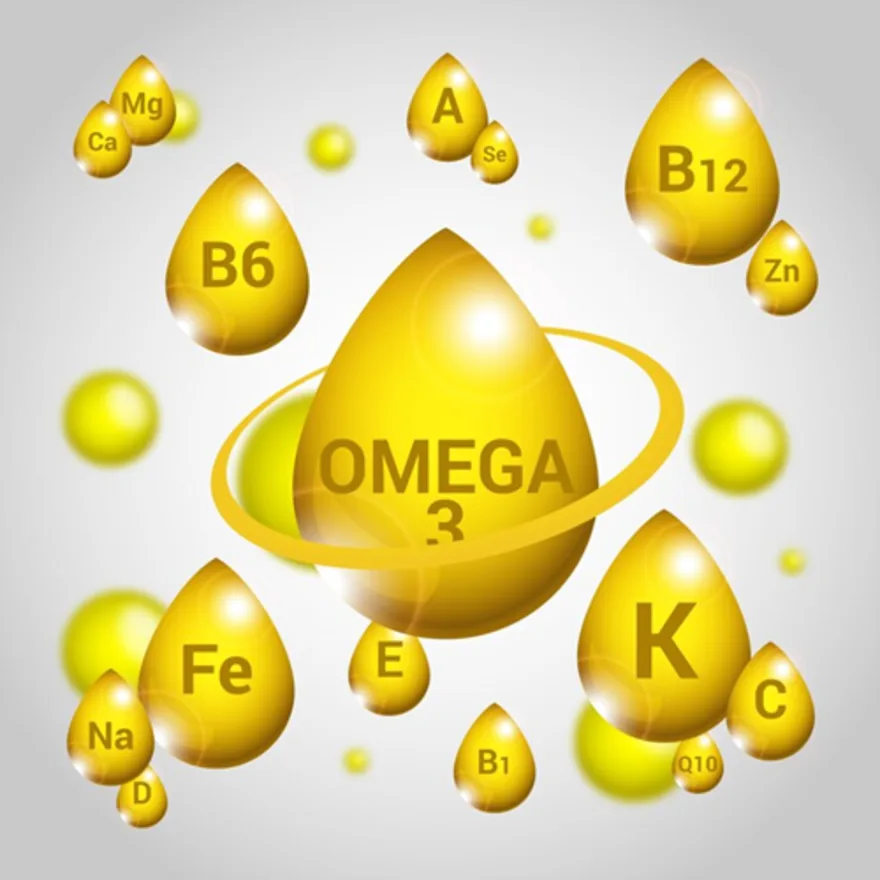Preventive Healthcare
Acid Fast Bacilli (AFB) Test: A Comprehensive Guide
9144 Views
0

Are you planning to get an Acid Fast Bacilli or AFB test and wondering what it entails? This guide is here to help! Keep reading this comprehensive guide that simplifies acid bacilli tests, covering types, procedures, and preparations in straightforward terms. Make informed decisions about your health with ease.
What is an Acid-Fast Bacillus (AFB) Test?
An AFB test, or Acid-Fast Bacillus test, is a laboratory procedure used to identify and diagnose infections caused by acid-fast bacteria. Acid-fast bacteria are a group of bacteria that resist the decolourisation process during the AFB stain procedures due to their unique cell wall composition, which includes a high concentration of mycolic acids. This resistance to decolourisation makes them stand out from other bacteria when subjected to certain AFB staining techniques.
The most common acid-fast bacteria is Mycobacterium tuberculosis, which causes tuberculosis (TB), a potentially serious infectious disease primarily affecting the lungs. Other notable acid-fast bacteria include Mycobacterium leprae, the causative agent of leprosy. This AFB stain plays a crucial role in identifying the presence of these bacteria, guiding healthcare professionals in the appropriate treatment and management of the infections. Moreover, it is important to note that the AFB test is just one of several diagnostic tools with clinical evaluation, medical history, and other laboratory tests to arrive at a comprehensive diagnosis.
What is the Procedure for AFB Testing?
The Acid Fast Bacilli test or AFB Testing procedure is a meticulous process. Here's an in-depth look at the AFB test procedure:
- Sample Collection: Obtain clinical samples (e.g., sputum, bodily fluids, tissue biopsies, or cerebrospinal fluid) from the patient.
- Specimen Processing: Process collected samples to concentrate and isolate the AFB stain, utilising techniques like centrifugation.
- Decontamination: Treat the specimen to eliminate contaminants, ensuring result accuracy.
- Culturing: Culturing the processed specimen in a specialised environment to encourage the growth of AFB stain bacteria.
- Staining: Apply AFB staining (e.g., Ziehl-Neelsen or Auramine-rhodamine) to visualise AFB Stain.
- Microscopic Examination: Technicians examine the AFB-stained specimen under a microscope.
- Confirmation and Reporting: Positive results of the acid bacilli test undergo confirmation, and the final results are reported to the doctor.
There is no normal range for an AFB (Acid-Fast Bacillus) test. Rather, it assesses whether or not AFB bacteria are present in a sample. This test primarily looks for the presence of AFB in specimens like sputum or other bodily fluids. A positive AFB result indicates the presence of AFB, suggestive of conditions like tuberculosis.
What are the Types of AFB Testing?
Several types of acid fast bacilli test or AFB testing methods are used to detect the presence of acid-fast bacilli in samples. Each method serves a specific purpose in diagnosing infections, particularly tuberculosis:
- AFB Smear Microscopy: A rapid and cost-effective technique, it involves AFB staining a specimen with special dyes to visualise acid-fast bacilli under a microscope. This method aids in the quick identification of bacilli.
- AFB Culture: This involves culturing clinical samples in a specialised environment to encourage bacterial growth. A positive AFB stain culture confirms the presence of viable acid-fast bacilli.
- Nucleic Acid Amplification Tests (NAATs): Molecular methods like PCR are employed to amplify and detect specific DNA sequences of acid-fast bacilli. NAATs offer high sensitivity and are crucial for diagnosing difficult cases.
- Histopathology: Examining tissue biopsies under a microscope helps identify acid-fast bacilli, providing valuable information for diagnosis.
- Radiometric Methods: It measures radio-labelled carbon dioxide release during bacterial metabolism, enabling rapid, sensitive detection for efficient TB and bacterial diagnosis and management.
Understanding these AFB Testing types enables doctors to choose the most suitable method based on the clinical scenario, ensuring accurate and timely diagnoses.
What is the Purpose of the AFB Test?
The acid fast bacilli test serves the following purposes:
- Tuberculosis Diagnosis: The primary purpose of the AFB Test is to diagnose active tuberculosis (TB) infections, a contagious disease caused by the Mycobacterium tuberculosis bacteria.
- Identification of Acid-Fast Bacilli: The test specifically targets acid-fast bacilli with unique staining characteristics. Detecting these AFB stains is indicative of a possible bacterial infection.
- Early Detection: AFB Testing, especially the rapid AFB smear microscopy, facilitates early detection of TB. Timely identification allows for prompt treatment initiation, reducing the disease's spread.
- Monitoring Treatment Response: The acid bacilli test is valuable for monitoring the effectiveness of TB treatment. Changes in AFB test results over time provide insights into the progress of the patient's recovery.
- Microscopic Examination: AFB smear tests involve microscopic examination of clinical specimens, aiding in the rapid and direct visualisation of acid-fast bacteria, particularly useful for lung diseases.
What is the Accuracy of the AFB test?
The accuracy of the AFB test depends on sample quality and laboratory expertise, influencing reliability. False negatives and positives can occur, which underscores the need for precise sample collection and testing. AFB cultures are generally reliable, indicating the presence of acid-fast bacilli. However, rare discrepancies, like a positive acid-fast bacilli test smear with a negative culture, may result from sample contamination, leading to inaccuracies.
False-positive AFB smears may occur if the patient takes antibiotics for mycobacterial infections, emphasising the importance of considering patient history and medication use during interpretation. While the AFB test or acid bacilli test is a valuable diagnostic tool, accurate results require careful consideration, highlighting the impact of various factors in its interpretation.
How Long Does it Take to Get the Results of an AFB Test?
The turnaround time for acid-fast bacilli test results can vary depending on the specific testing method. Here's a breakdown of different acid bacilli tests:
- AFB Smear: This microscopic examination typically provides initial results within 1–2 days of sample collection. A smear involves spreading the sample on a glass slide and observing it under a microscope for the presence of acid-fast bacteria. This method offers a relatively quick turnaround time for preliminary diagnosis.
- AFB Culture: Culture methods, while more sensitive, necessitate more time. Results from AFB cultures may take anywhere from several days to several weeks. Positive results in the acid bacilli test indicate the growth and identification of acid-fast bacteria in the cultured specimen, while negative results imply the absence of such growth.
- Nucleic Acid Amplification Tests (NAATs): Tests such as Polymerase Chain Reaction (PCR) deliver rapid results within a few hours using molecular techniques. Known for their high sensitivity, these acid bacilli tests contribute to swift and timely diagnoses, making them valuable in various clinical scenarios.
What If Your AFB Test is Positive?
A positive result on an AFB test can be concerning, as it suggests the presence of acid-fast bacilli in your clinical sample. Here's what you can expect:
- Confirmation Tests: A positive AFB test is often followed by additional confirmatory tests to validate the results and ensure accuracy.
- Consultation with a Doctor: Your doctor will discuss the implications of the positive result for AFB stain, explain the significance, and address any concerns.
- TB Diagnosis: A positive AFB test, especially when related to sputum, is commonly associated with tuberculosis (TB) diagnosis. Further tests, such as chest X-rays or CT scans, may be recommended to assess the extent of the infection.
- Treatment Initiation: If TB is confirmed with an acid bacilli test, prompt initiation of treatment is crucial. TB is a treatable bacterial infection, and early intervention helps prevent the spread of the disease to others.
- Contact Tracing: Positive TB cases often involve contact tracing to identify and test individuals who may have been exposed to the bacteria, enabling early detection and intervention.
- Follow-up Monitoring: Treatment progress will be monitored through follow-up tests, ensuring the effectiveness of the prescribed medications.
Remember, a positive acid bacilli test does not necessarily mean a severe outcome. Many individuals successfully overcome TB infections with proper medical attention and treatment adherence.
When Does Your Doctor Recommend AFB Testing?
Your doctor may recommend Acid-Fast Bacillus or AFB testing under specific circumstances, particularly when there are signs of respiratory infections like:
- Persistent Cough: If you have a persistent cough lasting more than three weeks, your doctor may recommend AFB testing.
- Fever and Chills: Symptoms such as fever and chills could indicate an underlying respiratory infection, leading to AFB testing.
- Night Sweats: Night sweats, especially when accompanied by other respiratory symptoms, may trigger the need for AFB testing.
- Unexplained Weight Loss: Sudden and unexplained weight loss and respiratory symptoms can be a red flag for your doctor to consider AFB testing.
- Loss of Appetite: A significant loss of appetite, particularly when associated with other respiratory signs, may prompt your doctor to recommend AFB testing.
Difference Between Latent TB and Active TB Infection
Here are the differences:
Latent TB Infection (LTBI)
Latent TB occurs when an individual is infected with the tuberculosis (TB) bacteria but does not show any symptoms. Here, the immune system successfully contains the bacteria, preventing active disease. Latent TB is not contagious, and routine screening helps identify individuals at risk.
Active TB Infection:
Active TB manifests when the TB bacteria become active, causing symptoms like persistent cough, fever, weight loss and night sweats. It can affect the lungs or other parts of the body. Active TB is contagious, spreading through the air when an infected person coughs or sneezes.
Are There Any Risks or Side Effects From an AFB test?
The Acid Fast Bacillus test is generally safe, but minor discomforts may occur, including:
- Coughing Discomfort: Coughing for the sputum sample may cause temporary throat irritation.
- Gag Reflex: Some may experience a mild gag reflex during AFB Test sample collection.
- Nausea: Rarely, individuals may feel nausea during the process.
Conclusion
The acid bacilli test is pivotal for diagnosing tuberculosis and other infections. The test's accuracy depends on various factors, emphasising the need for careful sample collection and precise testing procedures. As we navigate the healthcare landscape, Metropolis Labs stands out as a reliable partner for accurate blood testing and health check-up services. With a widespread presence across India, Metropolis Labs ensures the convenience of at-home blood sample collection by qualified technicians. Moreover, the advanced diagnostic labs and efficient online report delivery make them a trusted choice for pathology services, setting a benchmark in healthcare excellence. Book your blood test with Metropolis Labs here.













1701259759.webp)









 WhatsApp
WhatsApp